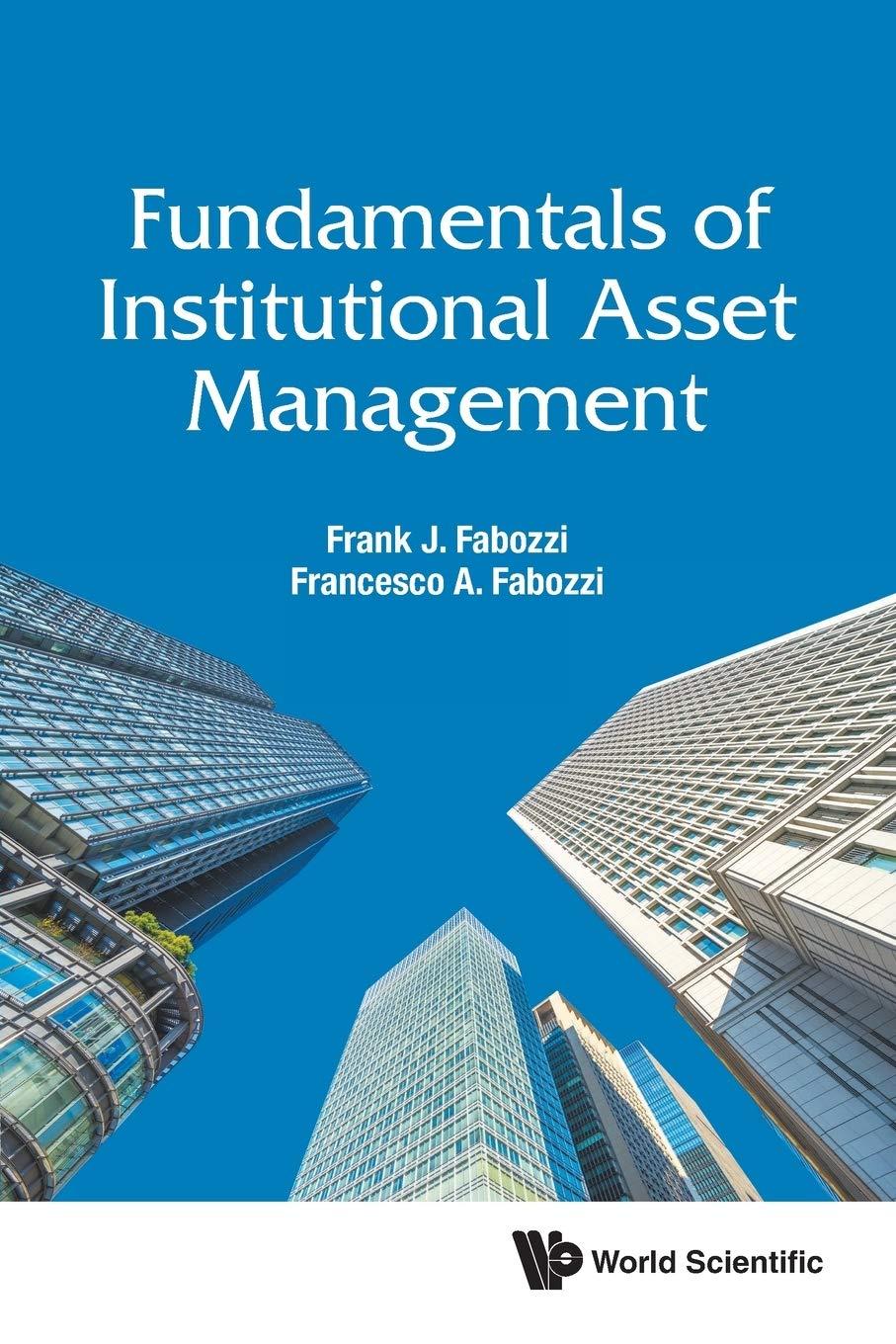Question
FOR THIS AND THE NEXT 4 QUESTIONS. (Investment Timing Option): Williams Industries, Inc. is interested in building a new manufacturing plant in Nairobi, Kenya. The
FOR THIS AND THE NEXT 4 QUESTIONS. (Investment Timing Option): Williams Industries, Inc. is interested in building a new manufacturing plant in Nairobi, Kenya. The estimated initial cost of the project is $12 million. The company expects the investment will produce positive cash flows of $2.35 million per year for 9 years and $5 in the 10th and final year. The project's cost of capital is 11%. What is the project's net present value? It is recommended that you perform this analysis on spreadsheet.
| A. $2.773 million |
| B. -$5.809 million |
| C. -$4.715 million |
| D. $11.557 million |
| E. $9.38 million |
| F. $2.814 million |
| G. None of the above |
QUESTION 14
With respect to the above problem, Williams Industries actually expects cash flows to be much higher or lower depending on whether the Kenyan government imposes heavy tariffs on imported machine parts. As it stands, the company would not know until after 2 years if the tariffs will be imposed. There is a 70 percent chance the tariffs will be imposed, in which case the re-estimated annual cash flows (for 9 years) will only be $0.8 million. If the tariffs are not imposed, however, the re-estimated annual cash flows will be $4 million. Given this additional information, the company is contemplating whether to proceed with the project today or wait for 2 years to find out if the tariff will be imposed. At any time the project is begun, the investment period will still be 10 years. Also, the project cost remains $12 million and Year 10 cash flow (CF10) is still estimated to be $5 million. Cost of capital is 11%. If the company waits for 2 years to begin the project, calculate the NPV of the project today (i.e. at time zero), assuming the case where the government imposes the import tariffs. It is recommended that you perform this analysis on spreadsheet. However your may also use a financial calculator.
| A. $2.773 million |
| B. -$5.809 million |
| C. -$4.715 million |
| D. $11.557 million |
| E. $9.38 million |
| F. $2.814 million |
| G. None of the above |
QUESTION 15
If the company waits for 2 years to begin the project, calculate the NPV of the project today (i.e. at time zero), assuming the case where the government decides NOT to impose the import tariffs. Again, it is recommended that you perform this analysis on spreadsheet.
| A. $2.773 million |
| B. -$5.809 million |
| C. -$4.715 million |
| D. $11.557 million |
| E. $9.667 million |
| F. $2.814 million |
| G. None of the above |
QUESTION 16
What is the EXPECTED NPV if the firm decides to wait for two years? Please give this a thought.
| A. $2.773 million |
| B. -$5.809 million |
| C. -$4.715 million |
| D. $11.557 million |
| E. $9.38 million |
| F. $2.9 million |
| G. None of the above |
QUESTION 17
This problem is an example of investment timing option (ITO). In general, under what condition should the company proceed with the project today instead of waiting until the later time?
| A. The company should wait if the NPV of starting the project today exceeds the NPV of the case where the tariff is NOT imposed |
| B. The company should wait if the NPV of starting the project today exceeds the NPV of the case where the tariff is imposed |
| C. The company should wait if the NPV of starting the project today is LESS than the expected NPV of waiting |
| D. The company should wait if the NPV of starting the project today is MORE than the expected NPV of waiting |
| E. None of the above |
Step by Step Solution
There are 3 Steps involved in it
Step: 1

Get Instant Access to Expert-Tailored Solutions
See step-by-step solutions with expert insights and AI powered tools for academic success
Step: 2

Step: 3

Ace Your Homework with AI
Get the answers you need in no time with our AI-driven, step-by-step assistance
Get Started


